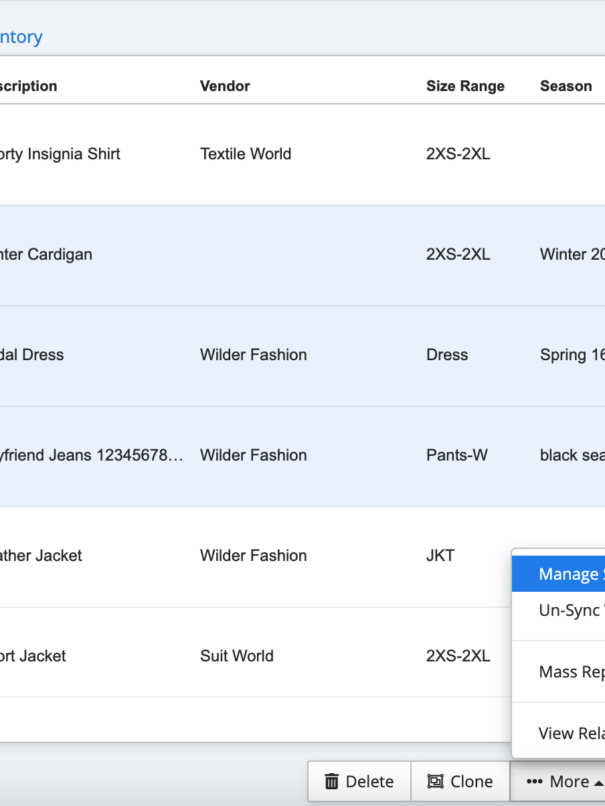The fashion scene is always fresh, with new styles and shifting consumer demands. As we move closer to 2024, the industry is getting ready for new challenges. It’s an exciting time as every fashion company seeks to find ways to keep up with consumer demand and stand out.
One big part of this change in business is how people are shopping more online. By the end of 2024, the global online fashion market is expected to reach nearly $992 billion. Also, keeping up with fresh trends is key for fashion businesses to stay in the game and keep customers and shoppers happy.
Another major trend is the growing love for green fashion items. In 2024, we’ll see more designer clothes made from cool materials such as plant-based leather and recycled fabrics, showing how fast fashion is becoming kinder to our planet.
Plus, there’s a shiny outlook for the high-end fashion sector too. The luxury fashion market is set to grow by 3.9% in 2024, reaching a market value of around $116 billion.
As we step closer to 2024, it’s more than just about cool clothes, footwear and accessories. This sector gives businesses a serious challenge. And it’s not just a fashion challenge, but a challenge that demands businesses completely revamp their operations in 2024.
It’s about how fast fashion brands can keep up with these changes, make shopping fun and easy, and care for our planet, too. Let’s take a closer look at the challenges 2024 might bring for fashion and beauty brands.

Fashion Challenge 1: Becoming More Sustainable
In this journey towards making fashion more sustainable, for instance, a known fashion style is not just preserved but is also being reinvented to align with eco-friendly and ethical standards.
As the fashion world prepares for 2024, there is an evident shift from the allure of fast fashion, which has been widely criticized for its detrimental effects on the environment and unethical labor practices. To combat this, there’s a visible inclination towards timeless pieces that are crafted sustainably, emphasizing quality and longevity.
Shoppers, equipped with greater awareness and information, are navigating their way through the bustling market of clothes by recognizing and supporting brands that echo their values.
The rise of eco-conscious consumers is an opportunity for brands to step up to the sustainability challenge. Being armed with knowledge on how to avoid fast fashion becomes a potent tool for consumers. They are not just looking for clothing; they are seeking an experience, a narrative of responsibility and consciousness articulated through each piece of attire they purchase.
While it is imperative to develop innovative materials, such as plant-based leather and recycled fabrics, there is an equally significant emphasis on revisiting and transforming known fashion styles to make them sustainable. Reimagining classic, timeless designs with eco-friendly materials and ethical production processes is a pivotal aspect of this sustainable fashion evolution.
As we embrace this greener shift, the transformation isn’t limited to materials and production alone but extends to the very essence of fashion consumption. It’s about slowing down, reverting from the rapid, often impulsive cycles of fast fashion, and ushering in an era where each piece of clothing is a testament to quality, sustainability, and ethical production.
As sustainable fashion and industry confront, it isn’t just about a transformation in materials and production processes. It’s about a profound shift in the narrative of fashion, where the lines between style, sustainability, and ethics are not just blurred but are intrinsically intertwined, offering consumers not just clothing but a narrative of responsibility, consciousness, and elegance that is sustainable and ethical.
Fashion Challenge 2: Integrating Technology
The fusion of fashion and technology is like a well-choreographed dance, with each step leading toward creating a more streamlined and innovative industry. In recent years, the fashion world has opened its arms to various tech advancements, and this embrace is only expected to tighten as we approach 2024.
Technology plays a key role in modern fashion operations—from design and production to marketing and sales. It enables brands to create better designs quicker, see demand, manage inventory efficiently, and connect with shoppers in new, exciting ways.
As 2024 nears, several technological advancements could reshape the fashion landscape.
For instance, artificial intelligence (AI) could help in predicting fashion trends, while virtual reality (VR) could offer virtual fitting rooms for a personalized shopping experience online.
Blockchain might ensure transparency and traceability of garments, from raw material to manufacture to finished garment, building trust with eco-conscious consumers.
There have been some notable tech wins in the fashion sector. For example, brands like Adidas and Nike have leveraged technology to create customizable shoes. Burberry has also been at the forefront, utilizing AR (augmented reality) and AI to enhance customer experiences both online and in-store for fashion items.
These success stories offer a glimpse into the boundless possibilities tech integration brings, emphasizing the importance of staying updated and adaptable when leveraging tech tools for a competitive edge.
Fashion Challenge 3: Building a Resilient Supply Chain
In recent times, the fashion industry, like many others, has felt the ripple effects of disruptions in global supply chains. Events such as trade restrictions and the pandemic have underscored the importance of having a robust supply chain that can weather the storm of unforeseen challenges.
Building a resilient supply chain is akin to fashioning a safety net that ensures a smooth flow from the design board to the retail rack, even when hiccups occur on the global stage. It’s about having a plan B and even a plan C, ensuring that every link in the supply chain is strong and adaptable.
Strategies to enhance supply chain resilience include diversifying supplier bases, investing in technology for real-time monitoring and analytics, and fostering strong relationships with key partners.
Additionally, adopting a circular supply chain model could minimize waste and ensure a more sustainable and resilient supply chain.
By investing in supply chain resilience, fashion brands not only safeguard their operations from disruptions but also position themselves to respond swiftly and efficiently to the changing demands of the market.
As 2024 unfolds, the ability of fashion companies to adapt and maintain a resilient supply chain could very well be a game-changer for manufacturers in the competitive fashion arena.
Fashion Challenge 4: Keeping Abreast of Consumer Behavior Shifts
The fashion landscape isn’t the only thing evolving; consumer behavior is also on a dynamic runway of change. The modern shopper is increasingly seeking a blend of quality, sustainability, and a personalized shopping experience.
The digital frontier has opened up new avenues for discovering and purchasing fashion, and brands that tap into these digital behaviors are likely to catch the eye of the modern consumer.
To adapt to these shifts, fashion businesses need to stay ahead of the curve in understanding what their customers value. This includes not only keeping a pulse on emerging fashion trends but also on shopping behaviors and preferences.
Leveraging technology to gather consumer insights and offer personalized, engaging shopping experiences can be a game-changer. It’s about meeting the consumer where they are, whether it’s on social media, in online stores, or in physical retail spaces.

Fashion Challenge 5: Maintaining Global Competition and Market Dynamics
The global stage of fashion is set to be as vibrant and competitive as ever in 2024. Brands from every corner of the globe are vying for the spotlight, each bringing a unique flavor of style and innovation to the table.
To stay ahead in this global race, understanding market dynamics and carving a distinctive niche are crucial.
Strategies to make companies stay competitive include embracing sustainability, integrating technology, and fostering a strong brand identity that resonates with consumers globally. Additionally, understanding regional preferences and adapting marketing strategies to cater to different demographics can also be a significant advantage.
Fashion Challenge 6: Ensuring Policy and Regulatory Compliance
As 2024 approaches, the runway of policy and regulatory changes could pose both challenges and opportunities for fast fashion brands and businesses. Staying compliant with new rules, whether they pertain to sustainability standards or data privacy, is crucial to avoid stumbling blocks like penalties and operational hitches.
Preparation is key. Fashion businesses can start by staying informed about upcoming regulatory changes, assessing the impact on their operations, and taking proactive steps to comply. This might include adjusting supply chain processes, revising marketing practices, or even reevaluating the materials used in production.
Fashion Challenge 7: Redefining Value—Going Beyond Trends to Timeless Narratives in Fashion
A deeper dialogue is unfolding beyond the hues of the latest trends. Individuals are beginning to question the essence of consumerism, veering towards a narrative that values the story stitched into every garment.
As Joan Crawford once imparted, the longevity of clothing is a testament to our care, transcending fleeting red carpet moments into timeless, cherished belongings. The paradigm shifts from the allure of low prices to the charm of clothing’s voyage, from the brand’s envisioning to its manifestation, and further, from a pristine boutique to a quaint second-hand shop.
In the same breath, the dialogue extends to the impact of fashion on our planet, intertwining the industry with the narrative of climate change.
The quest for sustainable practices is not confined to special occasions but is a burgeoning ethos encapsulating every fabric of the fashion industry. The ripple effect transcends to brands, where the emphasis is gradually shifting from merely keeping up with new trends to integrating sustainability at the core of their identity.
This narrative is not a mere opt-out from conventional practices but an insightful delve into fashion’s potential to embody ethical values without compromising on style. The juxtaposition of tradition with modernity, reality with virtuality, and ethics with aesthetics paints a vivid picture of the industry’s prospective evolution.
It echoes the ethos of one brand at a time, transcending the conventional boundaries of fashion towards a realm where the value of clothing is not determined by its price tag or its adherence to the latest trends but by the beautiful narrative embedded in every thread.
Conclusion
The journey towards 2024 is filled with both anticipation and fashion challenges in this competitive industry.
From the green wave of sustainability and ethical production to the tech-powered evolution and the shifting sands of consumer behavior, there’s a lot on the fashion horizon. Amidst the global competition and the ever-changing regulatory landscape, preparation and adaptability are the threads that can weave the path to success for fashion brands.
As we step into this future, the outlook is optimistic. By embracing change and innovating, fashion brands have the opportunity to not only navigate the challenges of 2024 but to thrive in a market that values both style and substance.
The fusion of tradition with modernity, ethics with aesthetics, and reality with virtuality paints a promising picture of what the fashion industry can become in the years ahead.







